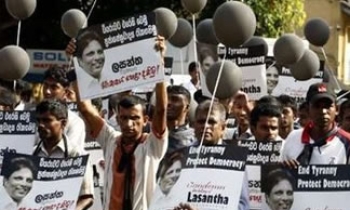Pamela Pekerman, who blogs about handbags at www.bagtrends.com, had to sneak into the Bryant Park tents during New York fashion week in February. Unable to secure hot invitations, she had to settle for watching models strut down the catwalk on a large video monitor outside the shows, or, worse, on the Internet. If she was lucky, she got a standing-room-only ticket.
This fall is another story. Ms. Pekerman is one of about 40 bloggers, up from just a handful a year ago, who scored official press passes from IMG, the company that runs fashion week. "It's an evolving category," says Fern Mallis, vice president of IMG Fashion.
For Ms. Pekerman, the recognition led to invitations to more than 20 designers' shows, including one of her favorites, Badgley Mischka. "I was like, 'Wow that's phenomenal,"' the 22-year-old blogger recalls. "It's a sign that they respect your work."
Once snubbed by the insular fashion world for their sometimes snarky reviews and tiny audiences, fashion bloggers are now attracting the attention of the fashion establishment. As blogs claim bigger followings, and advertisers shift more spending to them, designers see these independent Web publishers as a new marketing opportunity.
Many small designers, in particular, now realize they can get valuable exposure on blogs that they might not get in mainstream media. This year, with 191 shows in New York, up 25% from five years ago, there aren't enough old-media critics to cover them all.
"I would say we've become more selective," says Ed Nardoza, editor-in-chief of Women's Wear Daily, the industry trade newspaper.
But determining who's who in the blogosphere is complicated. Technorati, the most commonly used blog-tracking site, relies on bloggers themselves to categorize -- or tag -- their blogs. The company says that method is more democratic than having a third-party decide how to classify them. But because fashion is so widely discussed, a search for fashion blogs will turn up many sites that have little to do with the subject, including the personal diaries of teenagers.
Many public-relations firms that draw up guest lists for designers are doing their own research. Alison Brod, a New York publicist who represents designer Jill Stuart, now has an employee focusing exclusively on blogs, tracking their impact on sales, among other things.
And today, a year-old company called Glam Media plans to launch a new fashion blog-ranking system called GlamCentral that will use criteria such as "most viewed," "most linked to" and "most commented on." Chief Executive Samir Arora says the new rankings will be useful to advertisers and fashion publicists, as well as Glam itself, which is looking to buy blogs.
"This is going to be the YouTube of the fashion world," says Mr. Arora. Scheduled for release next quarter is a search feature that will enable users to look through fashion blogs to find a particular string of text.
Public relations firm LaForce + Stevens, which organized shows for clients like Nanette Lepore and Baby Phat, drew up ad hoc guidelines for this week's invitees. Rule No. 1: Bloggers who post photos of themselves don't make the cut. "Self-promotion is a bad sign," says principal James LaForce.
Under the rules, Lesley Scott of FashionTribes.com got a fourth-row seat at some shows, but shopology.com and a site called Coutorture were denied access, although neither site features blogger photos. "It's not that they are bad blogs, it's just a question of [audience] size," says Chris Constable, who makes the lists.
Some fashion companies are concerned about what bloggers are likely to say about their shows. One blogger who has gained entrée into the tents this year is Mario Lavandeira, founder of the gleefully catty celebrity-watching site PerezHilton.com. Mr. Lavandeira's blog recently posted a photo of Chanel designer Karl Lagerfeld in an all-white ensemble, with the caption "Unkle Karl and the case of the Male menopause." A spokeswoman for Chanel had no comment.
According to BlogAds, an agency which sells ads on PerezHilton.com, the site is viewed, on average, 40 million times per month -- a figure that's hard to ignore. By comparison, an established site such as Style.com (owned by CondéNet, a joint venture of Condé Nast and Fairchild Publications), gets viewed 87 million times per month.
An exclusive site-wide advertisement on PerezHilton.com now costs $25,000, up from $1,000 just a year ago. "People read me because I am not a cookie-cutter safe blog," says Mr. Lavandeira, who says he hasn't faced resistance from designers and has received about 50 invitations this year. "I don't mind pushing buttons and walking the fine controversial line."
For designers, getting mentioned on a popular blog also can provide an ego boost. After a show, which lasts around 20 minutes and can cost more than $100,000, many go through "a type of post-partum depression," especially if fashion kingmakers like Vogue editor Anna Wintour don't show up, says Kelly Cutrone, founder of People's Revolution, which organized more than a dozen fashion shows this season. "Then they Google themselves," she says, and the more mentions they find of their show, the happier they get.
Jay McCarroll, winner of Bravo's reality series Project Runway, invited two bloggers to his first fashion week show. "How could we not have bloggers there?" asks Nancy Kane of People's Revolution, which is organizing the show. The invitees, from a site called Blogging Project Runway, "write about Jay every time he scratches his nose," she says.
Gen Art, a nonprofit organization that supports emerging designers, created a seating section for about a dozen bloggers at its "Fresh Faces in Fashion" runway show on Friday night. As a result, the show got mentioned on at least three blogs, according to Technorati. One invited blogger, Fashion Addict Diary, called the show "sophomoric and low budget" but also praised some of the looks on the runway.
This year, bloggers' commentary will appear on some more traditional media sites. New York Magazine's Web site is featuring the work of the two women behind the often-critical celebrity fashion blog GoFugYourself.com. And Style.com has hired Scott Schuman, who authors man-on-the-street critiques on thesartorialist.com, to write about attendees' attire in New York and at upcoming shows in Paris and Milan. Mr. Schuman, a stay-at-home dad who used to work for the fashion house Valentino, says he knew his blog was a commercial success when he generated enough income from it to hire a nanny. Even eBay Inc.'s style director, Constance White, will blog from the tents for the Internet auction site.
Fashion blogging's coming of age is happening as U.S. online advertising revenue, a small percentage of which goes to blogs, topped $10 billion last year, and is expected to grow 22% annually, to reach $27.3 billion in 2010, according to Kelsey Group, a consulting firm.
BlogAds, which places ads on 1,300 blogs, 150 of which are fashion related, says that in the past six months it has inked deals with big fashion companies like Hennes & Mauritz AB's H&M and Gap Inc.
Zappos.com, an online footwear retailer, now advertises on Manolo's Shoe Blog, a widely followed site whose anonymous writer, known for his quirky humor and syntax, says he will be an invited guest at this week's fashion shows. Online fashion retailer Bluefly.com now spends about 20% of its Internet ad budget on blogs like PerezHilton.com and other gossipy sites. Johnson & Johnson, meanwhile, started sending samples of skin-care products like Aveeno, RoC and Purpose to bloggers three months ago, in hopes of getting positive coverage.
"These are citizen-journalists, and are not that different from people who sit on the masthead at Allure," says Monica Neufang, the company's director of public relations for skin care.
Write to Rachel Dodes at rachel.dodes@wsj.com
Corrections & Amplifications:
CondéNet is the Internet division of Condé Nast Publications Inc. This article incorrectly says CondéNet was a joint venture between Condé Nast and Fairchild Publications Inc.









